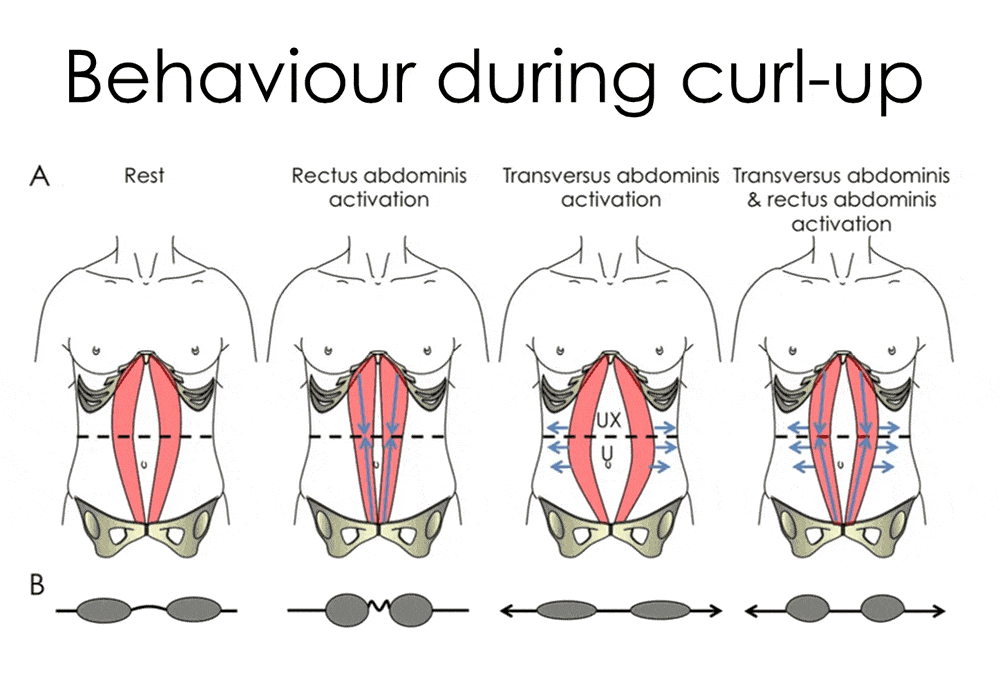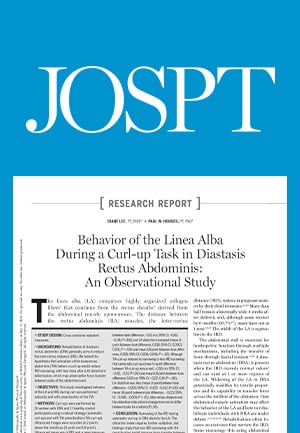Modification of the Abstract submitted to JOSPT and IFOMPT 2016
Diane Lee
Diane Lee and Associates, Surrey, B.C. Canada
Paul W Hodges
The University of Queensland, School of Health and Rehabilitation Sciences
Lee & Hodges DRA study published in time for IFOMPT
After much hard work and perseverance we’re happy to announce that the long awaited DRA study by Lee & Hodges was published just in time for IFOMPT 2016 where Diane was speaking on the subject. This is the culmination of a 10 year clinical and research journey and hopefully will bring new light for those recovering from DRA.
Read the full study here http://www.jospt.org/doi/abs/10.2519/jospt.2016.6536
View the IFOMPT poster here
Background
Diastasis rectus abdominis (DRA) is very common in the obstetric patient. While most women recover both the cosmetic appearance and function of the abdominal wall in the postnatal period, persistent separation of the rectus abdominis muscles occurs in some. Rehabilitation has traditionally focused on exercises to ‘close the gap’ and reduce the inter-recti distance (IRD). New evidence shows that if this is the sole goal, function may not be restored.
Purpose
New data, and a new interpretation, support exercises that prevent reduction of the separation and increase tension in the linea alba (prevent its distortion) to control the abdominal contents (cosmetic benefit) and transfer force between sides of the abdominal wall (functional benefit).
Methods
The IFOMPT presentation included both the research and clinical experience that has led to new protocols for treating women with postpartum DRA. The research (published July 2016 JOSPT) tested the hypothesis that strategies that narrow the IRD during a curl-up task may be counterproductive for optimal control of the trunk. Although activation of the lateral abdominal muscles may widen the IRD during a curl-up task, this strategy was hypothesized to create less distortion and thus more tension across the linea alba. This hypothesis was tested by comparison of the effect of different abdominal muscle activation patterns on the properties of the linea alba as measured by conventional ultrasound measures of IRD and a new measure of distortion of the linea alba in participants with and without DRA.
Results
When women with DRA performed a short head and neck curl-up task without any cueing for pre-contraction of the transversus abdominis (TrA) (Auto-CU) the IRD reduced (narrowed) from resting values; however, the linea alba was more distorted. Pre-activation of TrA during the same task (TrA-CU) resulted in a wider IRD than during the Auto-CU, however; there was less distortion of the linea alba. The IRD and distortion did not change from rest or differ between tasks for control participants.

Conclusion(s)
These findings show that IRD narrowing in parous women with DRA leads to more distortion of the linea alba and less potential for generating tension between sides of the abdominals. Further studies are planned to test this hypothesis in subgroups of women with DRA and clinical presentations of lumbopelvic pain and impairment.
Implications
The clinical implication is that IRD widening by TrA contraction, which has been discouraged in rehabilitation, may improve functional and cosmetic outcomes despite encouraging some increase in IRD widening. Clinicians should not focus only on training strategies that reduce the IRD especially if such strategies increase distortion of the linea alba.
Funding Acknowledgements
National Health and Medical Research Council of Australia
(Fellowship [PWH] (APP1002190); CRE grant (ID455863); Program grant (ID631717))



HI Many
Great questions! In those with DRA sometimes the edges of the LA where it attaches to the rectus sheath is hard to discern on UI because of the insufficient tension generated by TrA on the posterior rectus sheaths. I watch for the echogenicity of the sheaths to change with their abdominal cue and that helps me to know if they are using more of the superficial abds (EO, IO) which insert into the ventral sheath or TrA and some IO posterior sheath. In significant DRA the LA appears delaminated with space between the layers – this makes it also difficult to know where to measure. As long as you are consistent for remeasuring, it really doesn’t matter – change is what we are after. I try to find the midpoint of the AP dimension of RA and measure the ‘chord’ or straight line from that point on one side to the same on the other. This may not follow the path of the LA since distortion of the LA will cause the trajectory to not be a chord. But the IRD is about the distance and not distortion of the LA so measuring the shortest distance from the mid-point of the RAs is what you are after. Hope that answered your question! If not, ask me more.
Diane
Hi, I totally have this question in my head when I am training my clients with my real time ultrasound imaging.
The movement of the transversus totally move laterally, and yes the line alba by right is longer but we also note the quality of the IRD, my question is at which point we should measure the distance- at the tippy point of the recti or the edge of that fascia as it is not a clear cut line as it moves towards the belly button.